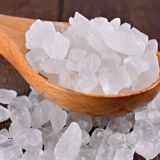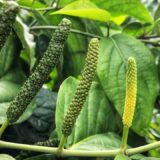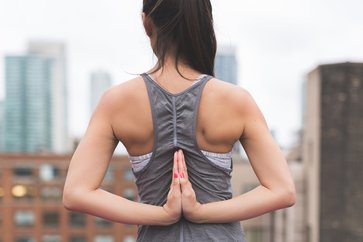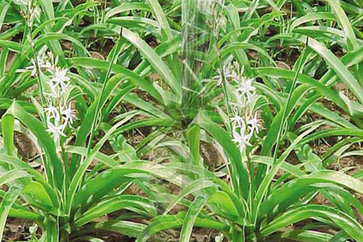Complete List Of Ayurvedic Oils And Their Uses Explained
There are many lists of Ayurvedic oils which are used in the Indian tradition of Ayurveda. They are known as an ayurvedic massage oil or therapeutic oil and their uses are of great importance for our health. They play an important role in boosting our body, they balance our three doshas known as Vata, pitta, and Kapha in Ayurveda.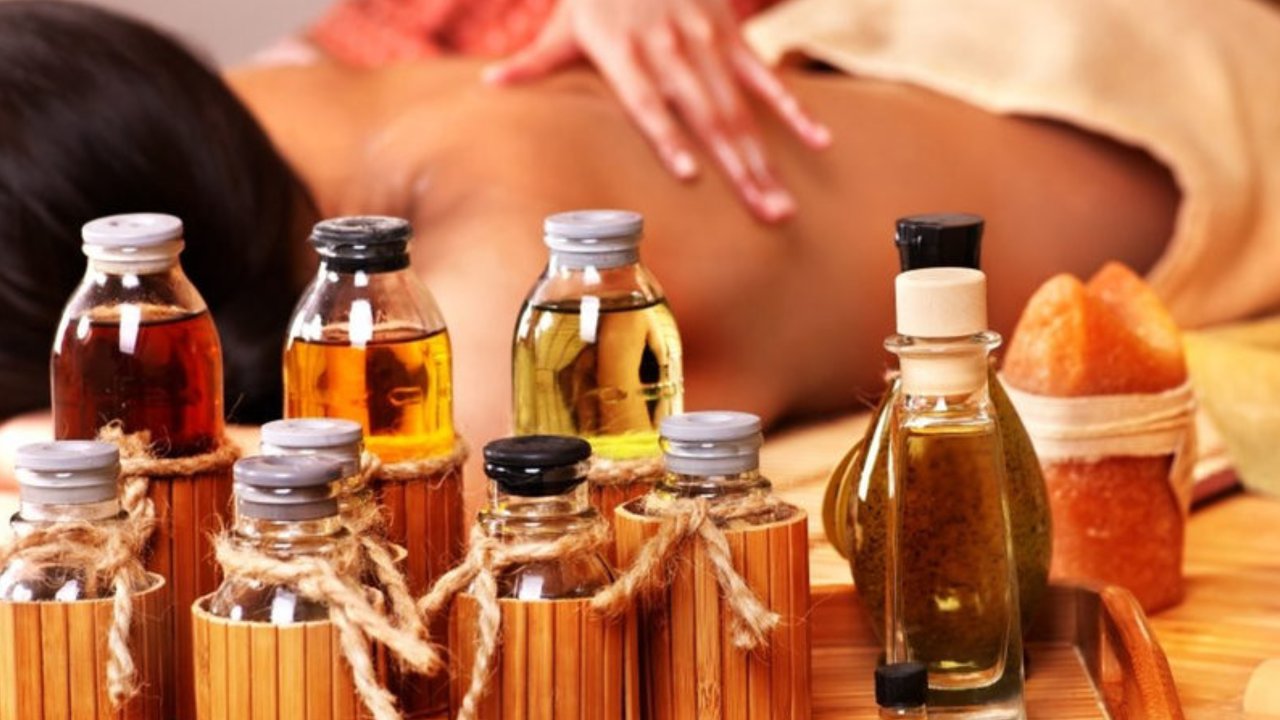
These doshas create an unequaled, biochemical laboratory in every human body. Each person’s body has a combination of Vata, pitta, and Kapha that is endless, with a charter that is as sole as his fingermark.
Every person, however, has one Dosha primary and the other secondary, and the third is the least prominent. Due to this unique combination of everybody, Ayurveda suggests adopting different massage oils that fit the principal Dosha.
What is the best way to determine what your dominant dosha is? Google ayurvedic doctor near me, and find the best doctor near you who can advise the best oil suitable for you. below is a list of Ayurvedic oils.
What Do Ayurvedic Massages Do to Our Bodies?
In Ayurvedic massage sesame oil is generally used. The application of the oil on the body sensitizes the sense of touch and intensifies the purification process.
It relieves and expels the altered doshas loosens the accumulated toxins, and increases the dhatus Agni and the Ojas, at the same time nourishes the skin and relaxes the mind.
According to Ayurveda, the oil applied to the skin is considered food for the body because it is absorbed through the capillaries of the skin and passes into the bloodstream circulating through the body. This is why it is said that what we put on the skin we could eat.
List Of Best Ayurvedic Oil For Massage
Ayurveda, the ancient Indian system of medicine, offers a wide range of oils for massage that are believed to promote relaxation, balance, and overall well-being. Here is a list of some popular Ayurvedic oils used for massage:
1. Sesame Oil (Til Tel): Sesame oil is one of the most commonly used oils in Ayurvedic massage. It is warming and nourishing, making it suitable for most body types.
2. Coconut Oil (Nariyal Tel): Coconut oil is cooling and moisturizing, making it ideal for Pitta body types or during hot weather.
3. Almond Oil (Badam Tel): Almond oil is rich in vitamin E and is known for its nourishing and rejuvenating properties. It is suitable for all body types.
4. Brahmi Oil: Brahmi oil is made from the herb Brahmi (Bacopa monnieri) and is traditionally used to promote mental clarity and calmness. It is beneficial for Vata and Pitta body types.
5. Ashwagandha Oil: Ashwagandha oil is made from the herb Ashwagandha (Withania somnifera) and is known for its rejuvenating and calming effects. It is beneficial for Vata and Pitta body types.
6. Bhringraj Oil: Bhringraj oil is made from the herb Bhringraj (Eclipta alba) and is traditionally used to nourish the hair and scalp. It is suitable for all body types.
7. Neem Oil: Neem oil is derived from the neem tree (Azadirachta indica) and is known for its purifying and cleansing properties. It is beneficial for Kapha body types and is often used in Ayurvedic skincare.
8. Ksheerabala Oil: Ksheerabala oil is made by combining cow’s milk and sesame oil with other herbs. It is traditionally used for promoting relaxation, soothing muscles, and relieving joint stiffness. It is suitable for all body types.
9. Mahanarayan Oil: Mahanarayan oil is a blend of various herbs and oils and is commonly used for relieving joint and muscle pain. It is suitable for all body types.
10. Dhanvantaram Oil: Dhanvantaram oil is a traditional Ayurvedic oil used for general body massage. It is made from
11. Chandanadi Taila (Sandalwood Oil): Sandalwood oil is known for its calming and cooling properties. It is often used in Ayurvedic massage to promote relaxation and balance excess Pitta.
12. Jatyadi Oil: Jatyadi oil is a healing oil that contains ingredients like neem, turmeric, and sesame oil. It is traditionally used for soothing and healing skin conditions such as cuts, wounds, and burns.
13. Kumkumadi Tailam: Kumkumadi tailam is a unique Ayurvedic oil blend made from various herbs and oils. It is particularly beneficial for the skin, promoting radiance and reducing the appearance of blemishes and pigmentation.
14. Narayana Taila: Narayana taila is an Ayurvedic oil used for relieving joint and muscle pain. It contains herbs like ashwagandha, bala, and gokshura, which help in soothing and nourishing the muscles and joints.
15. Pinda Taila: Pinda taila is a special oil used in Ayurvedic treatments like Panchakarma. It is prepared by boiling herbs in sesame oil and is used for massaging the body to promote relaxation, detoxification, and rejuvenation.
16. Sahacharadi Taila: Sahacharadi taila is an Ayurvedic oil formulated to address Vata-related imbalances and conditions such as joint pain, sciatica, and muscle stiffness. It contains herbs like sahachara (Strobilanthes ciliatus) and sesame oil.
17. Karpasasthyadi Taila: Karpasasthyadi taila is a traditional Ayurvedic oil used for head massage. It is believed to promote healthy hair growth, soothe the scalp, and nourish the hair follicles.
18. Mahamasha Taila: Mahamasha taila is a potent Ayurvedic oil made from a combination of numerous herbs and oils. It is commonly used for relieving muscle pain, inflammation, and stiffness.
19. Triphala Oil: Triphala oil is made by infusing Triphala powder (a combination of three fruits: Amalaki, bibhitaki, and haritaki) in base oil like sesame oil. It is used for various purposes, including detoxification, improving digestion, and supporting overall well-being.
20. Vacha Oil: Vacha oil is derived from the herb Vacha (Acorus calamus) and is often used in Ayurvedic massage for its stimulating and rejuvenating effects. It is believed to enhance mental clarity, concentration, and memory.
Remember, it’s essential to consider your body type, and specific health concerns, and consult with an Ayurvedic practitioner or healthcare professional before choosing the right Ayurvedic oil for your massage needs.
Which Oil Is Good For Body Massage?
The list of base oils for each dosha or dosha alteration can be different; we can also use other oils of high quality. The fruits or seeds which are sown can be different according to climate or region.
- Vata: Sesame, olive, almond, castor, ghee.
- Pitta: Almond, sunflower, coconut, olive, ghee.
- Kapha: Almond, corn.
Note: It is important to get a good base oil because although the base oils do not evaporate if their extraction is incorrect they are easily altered and their qualities are destroyed.
Therefore, before acquiring it, we must choose it with caution and care, taking into account that the oil will be absorbed by our skin.
What Type Of Base Oil Should We Use?
For a base oil that meets your criteria—being labeled as a biological product, free of transgenic or chemical products, and first cold-pressed—consider the following types:
1. Organic Olive Oil: Known for its high quality and purity, it’s typically first cold-pressed and free of synthetic chemicals. Olive oil is also rich in beneficial fatty acids and antioxidants.
2. Organic Avocado Oil: This oil is another excellent option, offering a high smoke point and a range of nutrients. Ensure it is first cold-pressed and certified organic to meet your standards.
3. Organic Argan Oil: Often used in cosmetic and skincare products, argan oil is cold-pressed and free of chemicals, and it’s also organic when certified.
4. Organic Almond Oil: This oil is also commonly first cold-pressed and free from transgenic or chemical treatments. It’s suitable for various applications, including skincare.
5. Organic Jojoba Oil: Jojoba oil is technically a liquid wax but is commonly used for its stability and skin benefits. Make sure it’s cold-pressed and certified organic.
6. Organic Hemp Seed Oil: This oil is known for its balanced omega fatty acid profile and is typically first cold-pressed. Ensure it’s certified organic to avoid any transgenic or chemical contaminants.
7. Organic Flaxseed Oil: Rich in omega-3 fatty acids, flaxseed oil is often cold-pressed and organic. It’s important to choose a reputable brand to ensure it meets all your criteria.
8. Organic Pumpkin Seed Oil: This oil is another good option, valued for its unique nutrients and often cold-pressed. It should be certified organic to ensure it meets your standards.
9. Organic Evening Primrose Oil: Known for its high gamma-linolenic acid (GLA) content, evening primrose oil is typically cold-pressed. Look for a product with organic certification.
10. Organic Rosehip Oil: This oil is often used for its skin benefits and is usually first cold-pressed. Check for organic certification to ensure it’s free from synthetic chemicals.
11. Organic Sesame Oil: While commonly used in cooking, sesame oil can also be a good base oil when first cold-pressed and certified organic. It has a mild flavor and is rich in antioxidants.
The Best Ayurveda Essential Oils For Doshas
You can medicate with many plants according to the use we want to give our body massage.
- Vata: Ashwagandha, Basil, Ginger, Licorice, Thyme.
- Pitta: Neem, Licorice, Burdock, Peppermint, Cardamom, Hibiscus.
- Kapha: Neem, Sage, Rosemary, Triphala, Hibiscus.
List Of Ayurvedic Oils & Their Uses
In India and especially in Kerala there is a great tradition in the preparation of plant oils, even many of the mixtures are kept a secret. Moreover, there are some oils that are popularly used and marketed in India.
- Dhanwantharam oil: Especially good for chronic Vata diseases.
- Pinda thailam: It is used especially for acute rheumatic diseases when refreshing oil is needed.
- Gandha Thailam: Applied to fractures, sprains, and sprains to help them heal quickly.
- Bala Thailam: It is used for fertility, to relieve exhaustion, especially after childbirth, and for other Vata conditions.
- Anu Thailam: They are used for the practice of Nasya, they contain water and goat’s milk.
- Narayana oil: For Vata ailments and for fertility.
- Vishagarbha taila: It is applied to the clogged joints by the mistress to help undo the obstruction.
What Does Medicated Ghee Do?
Besides base oil you can also use medicated ghee, which can be easily found in the local market or online, it can be used for many health benefits, the best uses are given below.
- Triphala ghee: for eye diseases, especially conjunctivitis.
- Brahmi ghee: for mental illness and to stimulate intelligence.
- Mahatiktaka ghee: it is a combination of bitter herbs that are used for skin diseases.
Which Essential Oils Blend Well Together?
Below is the list of essential oils which can be blended together to get many health benefits.
1. Ghee medicated with Licorice
- Relieves Pitta dosha.
- Alterations such as headaches, burns, and hair loss.
- A Netra-Basti can be done for dry eyes.
- It improves the complexion of the skin and gives it a good color, acts as a rejuvenator.
2. Sesame oil medicated with Rosemary
- Relieve Vata and Kapha dosha.
- Rosemary is stimulating both for blood circulation and for mental agility and memory.
- It is good for baldness and dandruff revitalizing the scalp.
- Also for migraines.
- It is used to relieve muscle and gastrointestinal spasms.
Precautions: Do not administer in cases of aggravated Pitta.
3. Ghee medicated with Turmeric
- Relieve Kapha
- It is healing and cleansing.
- It can be applied externally on wounds, mainly when there is inflammation, itching, pain, or burning sensation.
The principal use of ayurvedic oil is to make us healthy and fit. It can be administered internally (oil pulling) or externally (massage).
FAQs
Q1: What is the primary use of Sesame Oil in Ayurveda?
A1: Sesame oil is primarily used for body massage (Abhyanga) in Ayurveda. It helps to improve circulation, nourish the skin, and calm the nervous system. It’s also utilized for oil pulling and in Ayurvedic cooking.
Q2: How does Coconut Oil benefit the skin and hair according to Ayurveda?
A2: Coconut oil is known for its moisturizing properties. It is used to hydrate and soothe the skin, improve hair health by reducing dryness and promoting shine, and also serves as a base for various Ayurvedic formulations.
Q3: Why is Mustard Oil considered beneficial in Ayurvedic treatments?
A3: Mustard oil is valued for its warming properties and is used to relieve joint and muscle pain, stimulate circulation, and support digestion. It’s also used in cooking due to its stimulating effects.
Q4: What are the uses of Brahmi Oil in Ayurveda?
A4: Brahmi oil is applied to the scalp to enhance mental clarity, reduce stress, and promote hair growth. It’s also used to calm and soothe the mind.
Q5: In what ways is Ashwagandha Oil used in Ayurvedic practice?
A5: Ashwagandha oil is used to boost strength, stamina, and overall vitality. It’s also beneficial for reducing stress and improving general well-being.
Q6: How does Neem Oil benefit the skin and other uses?
A6: Neem oil is known for its antibacterial and antifungal properties, making it effective for treating skin conditions like acne and eczema. It is also used for pest control in gardening.
Q7: What is Amla Oil used for in Ayurveda?
A7: Amla oil is applied to the hair to strengthen it, promote growth, and improve scalp health. It’s also used as a general tonic for overall body health.
Q8: What is Kumkumadi Oil and how is it used?
A8: Kumkumadi oil is a facial oil used to brighten the skin, reduce dark spots, and promote an even complexion. It’s commonly applied to the face as part of a skincare routine.
Q9: What are the benefits of Shatavari Oil according to Ayurvedic tradition?
A9: Shatavari oil is known for its cooling properties and is often used to support female reproductive health, hormonal balance, and overall wellness.
Q10: How is Ginger Oil utilized in Ayurvedic treatments?
A10: Ginger oil is used for its warming properties to relieve muscle and joint pain, improve digestion, and boost circulation.
Q11: What are the primary uses of Tulsi Oil in Ayurveda?
A11: Tulsi oil is valued for its anti-inflammatory and antimicrobial properties. It is used for respiratory issues, skin problems, and to support overall immune health.
Q12: How does Yashtimadhu (Licorice) Oil benefit users?
A12: Yashtimadhu oil is used to soothe skin conditions, improve digestion, and support respiratory health due to its cooling and anti-inflammatory effects.
Q13: What is the significance of Chandan (Sandalwood) Oil in Ayurveda?
A13: Sandalwood oil is used for its calming and anti-inflammatory effects on the skin and its grounding aroma, which is beneficial for meditation and relaxation.
Q14: What role does Cardamom Oil play in Ayurvedic medicine?
A14: Cardamom oil is used for its digestive benefits, uplifting aroma, and to support respiratory health. It has warming and stimulating properties.
These Ayurvedic oils offer a wide range of benefits, from enhancing physical health to supporting mental well-being. Exploring their uses can help you tailor your wellness routine to your specific needs and preferences.




